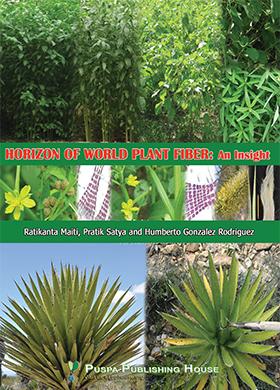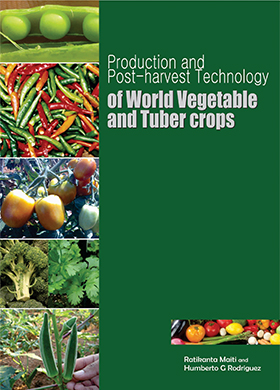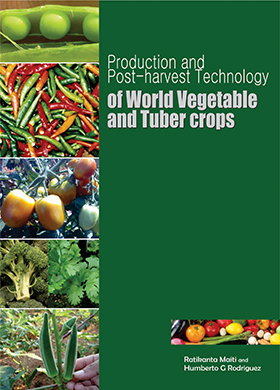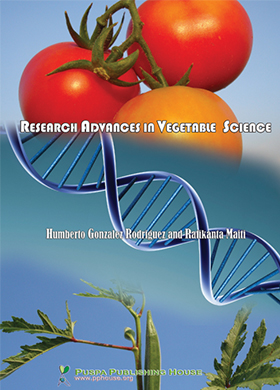Full Research
Phyto-Pathogenic Fungi Associated with Damping-off of Tomato in Himachal Pradesh
Swadha Bhardwaj and Meenu Gupta
- Page No: 001 - 005
- Published online: 15 Feb 2023
- DOI: HTTPS://DOI.ORG/10.23910/2/2023.0511
-
Abstract
-
swadhabhardwaj06@gmail.com
This study aims at identifying the major soil borne pathogens of tomato associated with damping-off in nursery areas. To achieve this, tomato nurseries of plant pathology farm of our area has been investigated. Samples with damping-off symptoms were collected and cultured under aseptic conditions. Fungi were isolated from diseased stem and roots on potato dextrose agar (PDA) medium. Growing colonies of fungi were purified by single spore and hyphal tip methods. Based on the morphological characters and pathogenicity tests, fungal species were identified as Pythium ultimum, Fusarium oxysporum, Rhizoctonia solani and Sclerotium rolfsii.
Keywords : Phytopathogenic fungi, damping-off, tomato, pathogenicity, nursery
-
Introduction
Tomato (Solanum lycopersicum L.) is one of the most important and remunerative vegetable crops all over the world, known as protective food because of its nutritive value and availability round the year. It belongs to family Solanaceae having chromosome number 2n=24. It is considered as the second most significant vegetable crops in the world next to potato (Mohamed et al., 2010). India ranks second in area as well as in production of tomato with about 7.97 lakh ha area with the production of 20.7 million tones (NHB, 2017). Madhya Pradesh is the leading state followed by Andhra Pradesh and Maharashtra in terms of area under tomato crop in India, however, in Himachal Pradesh, the annual production is 5.02 lakh tones from an area of 11070 ha (Department of Agriculture, 2019).
Tomato is generally grown as winter crop in plains of India but in Himachal Pradesh, it is cultivated as an off-season crop during April to October. It is prone to attack by various fungal, bacterial, viral and nematode diseases which may be seed borne, soil borne, wind borne or vector borne. Among soil borne diseases, damping-off, which may be pre-emergence or post-emergence, is serious at nursery stage. It is responsible not only for the poor seed germination but also for carryover of the pathogens to the field where transplanting is done for raising the crop. Infected seedlings provide an ideal avenue for rapid and efficient spread of disease caused by soil and seed borne pathogens (Shyam, 1991).
In tomato nurseries, damping-off is mainly caused by Pythium aphanidermatum (Edson) Fitz. (Singh, 1985; Srivastava and Tiwari, 2003) and Rhizoctonia solani Kuhn (Katan et al., 1980; Khare et al., 2000). Singh (1987) reported the association of different fungi like Pythium, Phytophthora, Fusarium, Rhizoctonia, Sclerotium, Phomopsis, Colletotrichum etc. with damping-off in vegetable nurseries.
Prasad et al. (2017) reported soil borne fungal pathogens such as Pythium spp., Rhizoctonia solani and Sclerotium rolfsii infecting the tomato crop and causing damping-off disease. Species of Fusarium, Rhizoctonia and Sclerotinia fungi persist in soil because they produce resistant survival structures such as melanized hyphae, chlamydospores and sclerotia which make it hard to control. Therefore, present study was planned to study the phyto-pathogenic fungi associated with damping-off of tomato in Himachal Pradesh.
-
Materials and Methods
2.1. Symptomatology
The infected tomato seedlings showing characteristic symptoms of damping-off were collected from tomato nurseries and brought to the laboratory for further studies.
2.2. Isolation and identification of the associated pathogen (s)
Repeated isolations were made from diseased seedlings collected from different locations on oat meal agar for Pythium sp. and potato dextrose agar medium for Fusarium, Rhizoctonia and Sclerotium, incubated at 25±1°C, further purified by hyphal tip method and maintained at 4 ± 1°C.Septation, diameter of hyphae, shape, size of spores and sclerotia, colony growth, its color, pigmentation, size, shape, septation of conidia, presence of chlamydospores and sclerotial formation were recorded using an Olympus microscope and a Promagnus software, respectively, compared with the standard authentic descriptions, taxonomic keys (Waterhouse, 1967; Booth, 1971; Saccardo, 1911) and associated fungi were identified.
2.3. Pathogenicity
Pathogenicity tests of the isolated fungi were conducted under greenhouse conditions in two different sets to check that the isolated pathogens were responsible for both pre and post- emergence damping-off of tomato.
2.3.1. Mass multiplication of pathogens
The mass culture of isolated fungi was prepared on corn: sand medium. The maize grains were boiled till they get softened. Excess water from grains was removed. Maize grains were air dried and mixed with sand (3:1) along with 2% sucrose. To avoid bacterial contamination, Streptocycline (100 ppm) was added in the mixture. Fill the medium in autoclavable polypropylene bags (150 g bag-1) or conical flasks (250 ml), plugged with non-absorbent cotton and was sterilized by autoclaving at 1.05 kg/cm2 for one hour for three consecutive days. The sterilized medium was inoculated under aseptic conditions with seven days old culture of isolated pathogens i.e. P. ultimum, F. oxysporum, R. solani and S. rolfsii. Five to six bits (4 mm size) of the fungi were placed in different sides of each bag/flask. The inoculated bags/flasks were incubated at 25±2oC in BOD incubator for fifteen days. Two weeks old mass culture of fungi was used for carrying out various pot experiments.
2.3.2. Soil inoculation method/Preparation of the sick soil
Mass culture of isolated pathogens i.e., P. ultimum, F. oxysporum, R. solani and S. rolfsii was mixed @ 10g/pot in steam sterilized soil individually as well as in combination contained in pots 10 cm diameter up to 5 cm depth. After inoculation, the soil was sprayed with sterilized distilled water and allowed to establish under polythene cover for 6 days.
2.3.3. Sowing of seeds
After six days of inoculation, eight seeds of tomato cv. “Solan Lalima” were sown in pots. A treatment without inoculum served as control. In this set, pots were transferred to poly house after sowing the seeds and observed for pre-emergence damping-off symptoms, seed rotting and patchy germination. To confirm the identity, the re-isolated fungi were compared with the original.
2.3.4. Transplanting of seedlings
In another set for post- emergence damping off studies, ten healthy juvenile seedlings were transplanted in each pot containing sick soil. Pots were kept in poly house conditions at 25°C. The plants were periodically observed for the appearance of post-emergence damping-off symptoms.
-
Results and Discussion
3.1. Symptomatology
Symptoms of the disease appeared in two phases viz., pre-emergence and post-emergence. Pre-emergence damping-off caused seeds and young seedlings to rot before they emerged from the growing medium and resulted in patchy growth while ‘post-emergence’ damping-off killed newly emerged seedlings by causing a water-soaked, soft brown lesion at the stem base, near the soil line, that pinched off the stem causing the seedling to topple over and die. In the first case, seeds became soft, rotten and failed to germinate. In the second case, stems of germinating seeds were affected with characteristic water-soaked lesions formed at or below the soil line. Post-emergence damping-off symptoms occurred when seedlings decayed, wilted and died after emergence. Seedling stems became thin and tough (commonly known as “wire stem”), which often led to reduced seedling vigor. These symptoms were also accompanied by leaf spotting and ultimately a complete root rot. Overall, the symptoms on the stem of the seedlings included water-soaked, sunken lesions at or slightly below the ground level and sometimes also below ground line (i.e., on the roots) causing the plant to fall over. The characteristic symptoms of damping-off as observed in pre-emergence and post emergence phases in the present investigations are in accordance with those described by earlier workers (Landis, 2013).
3.2. Identification of pathogens
The cultural and morphological characters of the isolated fungi viz. colony growth, its color, pigmentation, size, shape and septation of conidia, presence of chlamydospores and sclerotial formation were recorded using Olympus microscope and Promagnus software. These characters were then compared with the standard authentic descriptions and taxonomic keys and associated fungi were identified as Pythium ultimum, Fusarium oxysporum, Rhizoctonia solani and Sclerotium rolfsii. The cultural and morphological characters of the pathogens associated with damping-off of tomato have been presented in Table 1.
3.2.1. Pythium ultimum
Mycelial colonies of isolated fungus were white in colour with fluffy or cottony dense aerial growth on oat meal agar. Fungus was fast growing and took 72 to 96 hours to completely cover the Petri plate (90 cm diameter) with mycelium. Microscopic studies (400x magnification) revealed that the hyphae of the pathogen were hyaline and coenocytic but a few septa were also observed in old cultures. Hyphal diameter ranged from 4.7 to 8.7 µm with an average diameter of 6.19 µm. Sporangia were mostly round and somewhat ovoid in shape without any papilla and zoospore production was also observed. The average size of sporangium was 27.6× 26.6 (µm)2. Oospores were round, smooth, thick walled, plerotic and hyaline with an average size of 23.1×22.9 (µm)2 (Figure1a). Based on coenocytic hyphae, absence of papillate sporangia, production of oospores and other morphological characteristics, this isolated pathogen was identified as Pythium ultimum which was confirmed based on morphological characters documented in standard authentic descriptions and taxonomic keys (Waterhouse, 1967).
3.2.2. Fusarium oxysporum
The colony of F. oxysporum showed white cottony aerial mycelial growth with purplish tinge on the reverse side having 4 to 5 cm diameter after 5 days of incubation on potato dextrose agar medium. The hypha of the fungus was septate. The fungus produced macroconidia, microconidia and chlamydospores. Macroconidia were the typical Fusarium spores, hyaline, 3 to 5 septate, falcate having gradually pointed and curved ends and appeared on sporodochia or without formation of such fruiting bodies with measured sizes in Table 1. Microconidia were abundant, ellipsoid, straight to the curved, 5 to 15×2.2 to 3.5 (µm)2 in size when one to two celled and hyaline (Figure 1b). Chlamydospores both smooth and rough walled characterized by thick walls formed terminally or intercalary, single or in pairs. These characters were then compared with the standard descriptions given by Booth (1971) in key “The Genus Fusarium”.
3.2.3. Rhizoctonia solani
The mycelium was septate, colour of the hyphae varied from hyaline when young to brownish on maturity. The size of hyphae varied from 117.7 to 173.4 × 6.19 to 9.29 (µm)2, and cell length over 100 µm. The branching occurred almost at right angles to the hyphal cell plate. Branched hyphae have a constriction at the point of branching (Figure 1c). Fungus also produced sclerotia which were barrel shaped, comparatively smaller cells in groups, brown to black and unlike other fungi sclerotia were undifferentiated into rind and medullae, ranging from 10 to 20 µm in length. The individual sclerotium was less than 3 mm in diameter, rounded and light brown colored. Mycelial branching at right angles and production of abundant brown sclerotia is a known feature for the identification of R. solani (Sneh et al., 1991).
3.2.4. Sclerotium rolfsii
The fungal mycelium was first silky white in color and later turned to dull white with radial spreading giving fan like appearance. The hyphae were hyaline, thin walled, sparsely septate when young. The cells were 60 to350 µm long and 2 to 8 µm wide. Broader hyphae showed clamp connections, which were absent in thin hyphae. Sclerotia initially were formed from hyphal strands that consist of 3 to 12 hyphae lying parallel. Mature sclerotia were dark brown but variation from lighter brown to darker color may be found. These were small about the size of radish seed, hard and usually round (Figure 1d). Similar morphological characters of S. rolfsii were reported by Singh (1987), Mirza and Aslam (1993), Mohan et al. (2000).
3.3. Pathogenicity
In pathogenicity tests, the observations on incubation period and disease incidence have been presented in Table 2.
It is evident from the data (Table 2) that all the fungi were pathogenic in nature and caused damping-off disease either alone or in combination, however, out of these fungi, P. ultimum was the most pathogenic in nature developing disease earliest with incubation period of 96 hours either alone or in combination with other fungi. This was followed by S. rolfsii exhibiting an incubation period of 120 hours while it was the highest for F. oxysporum and R. solani showing 144 hours of incubation period. In combined application of inocula of these fungi, presence of P. ultimum hastened the disease development (96 h).
Data presented in Table 2 further revealed that similar trend was observed for disease incidence of pre-emergence and post-emergence damping-off and P. ultimum resulted in highest incidence of pre-emergence and post- emergence damping-off giving 88.88 and 50.00 % disease incidence, respectively.
P. ultimum, F. oxysporum, R. solani and S. rolfsii have been found to be pathogenic on tomato which caused pre-emergence and post-emergence damping-off. These results are in corroboration with the studies conducted by various workers such as Middleton (1943), Tripathi and Grover (1976) and (Rafin and Tirilly, 1995) who reported that these fungi to be pathogenic in nature.
-
Conclusion
The present study deals with the isolation and identification of phytopathogenic fungi. Fungal isolates obtained were P. ultimum, F. oxysporum, R. solani and S. rolfsii and identified on the basis of colony morphology by using Olympus microscope and Promagnus software. Isolated fungi were proved to be pathogenic when tested for pathogenicity in the pots under glasshouse conditions either alone or in combination. This study proves rapid and less expensive technique to validate initial source of contamination. To understand the plant diseases in a better way one should understand the, depth of diverse nature of plant pathogenic fungi.
Table 1: Cultural and morphological characters of pathogenic fungi associated with damping-off of tomato
Figure 1: Cultural and morphological characters of phytopathogenic fungi associated with damping-off of tomato
Table 2: Pathogenicity of pathogenic fungi associated with damping-off of tomato
Table 1: Cultural and morphological characters of pathogenic fungi associated with damping-off of tomato
Figure 1: Cultural and morphological characters of phytopathogenic fungi associated with damping-off of tomato
Table 2: Pathogenicity of pathogenic fungi associated with damping-off of tomato
Table 1: Cultural and morphological characters of pathogenic fungi associated with damping-off of tomato
Figure 1: Cultural and morphological characters of phytopathogenic fungi associated with damping-off of tomato
Table 2: Pathogenicity of pathogenic fungi associated with damping-off of tomato
-
Ahmed. L., Martin-Diana, A.B., Rico, D., Barry-Ryan, C., 2011. The antioxidant properties of whey permeate treated fresh-cut tomatoes. Food Chemistry 124, 1451–1457.
Booth,C., 1971. The Genus Fusarium. Commonwealth Mycological Institute, Kew, UK. 237p.
Department of Agriculture 2019. http://www.agrculture.gov.in.
Katan, J., Rotem, I., Finkel, Y., Daniel, J., 1980. Solar heating of the soil for the control of pink root and other soil borne diseases in onions. Phytoparasitica 8–39.
Khare, C. P., Mahajan, V., Tiwari, P.K., 2000. Management of damping-off disease of brinjal, tomato and onion. Proc. National Symposium on Onion-Garlic Production and Post Harvest Management, Challenges and Strategies, Nasik, India 19–21.
Landis, T.D., 2013. Forest nursery pests: damping-off. For Nursery Notes 2, 25–32.
Middleton, J.T., 1943. The taxonomy, host range and geographic distribution of the genus, Pythium. Memoirs of the Torrey Botanical Club 20, 171–172.
Mirza, M.S., Aslam, M., 1993. In Pakistan. Helia 16(18), 85–88.
Mohamed, A.A.N., Ismail, M.R., Rahman, M.H., 2010. In vitro response from cotyledon and hypocotyls explants in tomato by inducing 6-benzylaminopurine. African Journal of Biotechnology 9, 4802–4807.
Mohan, L., Paranidharan, V., Prema, S., 2000. New disease of timla fig (Ficus auriculata) in India. Indian Phytopathology 53, 496.
NHB. 2017. http;//www.nhb.gov.in.
Prasad, M., Rajendra, S.B., Vidya, D., Uma, G., Rao, S.R.K., 2017. In vitro evaluation of fungicides and biocontrol agents against damping-off disease caused by Sclerotium rolfsii on tomato. International Journal of Pure and Applied Bioscience 5, 1247–1257.
Rafin, C., Tirilly, Y., 1995. Characteristics and pathogenicity of Pythium spp. associated with root rot of tomatoes in soilless culture in Brittany, France. Plant Pathology 44(5), 779–785.
Saccardo, P.A., 1911. Notae mycologicae. Series XIII. Annales Mycologicae 9, 249–257.
Shyam, K.R., 1991. Important diseases of summer and winter vegetable crops and their management. In: Horticultural Techniques and Post-harvest Management (Jain et al., eds). Directorate of Extention Education, UHF, Nauni 62–69.
Singh, R.S., 1987. Diseases of vegetable crops. Oxford & IBH Company Private Limited, New Delhi, 362.
Sneh, B., Burpee, L., Ogoshi, A., 1991. Identification of Rhizoctonia species. Annual Phytopathology Society Press, St. Paul, Minnesota. 133p.
Srivastava, K.J., Tiwari, B.K., 2003. Nursery disease management in onion with biocontrol and plant products. NHRDF News Letter 23, 5–7.
Tripathi, N.N., Grover, R.K., 1976. Inoculum potential and soil factors affecting the pathogenesis of Pythium butleri in causing damping-off of tomato. In: Proceedings of the Indian National Science Academy 41, 466–474.
Waterhouse, G.E., 1967. Key to Pythium pringsheim. Commonwealth Mycological Institute, Mycological Papers 109, 1–15.
Reference
Cite
Bhardwaj, S., Gupta, M. 2023. Phyto-Pathogenic Fungi Associated with Damping-off of Tomato in Himachal Pradesh . International Journal of Economic Plants. 10,1(Feb. 2023), 001-005. DOI: https://doi.org/10.23910/2/2023.0511 .
Bhardwaj, S.; Gupta, M. Phyto-Pathogenic Fungi Associated with Damping-off of Tomato in Himachal Pradesh . IJEP 2023,10, 001-005.
S. Bhardwaj, and M. Gupta, " Phyto-Pathogenic Fungi Associated with Damping-off of Tomato in Himachal Pradesh ", IJEP, vol. 10, no. 1, pp. 001-005,Feb. 2023.
Bhardwaj S, Gupta M. Phyto-Pathogenic Fungi Associated with Damping-off of Tomato in Himachal Pradesh IJEP [Internet]. 15Feb.2023[cited 8Feb.2022];10(1):001-005. Available from: http://www.pphouse.org/ijep-article-details.php?art=366
doi = {10.23910/2/2023.0511 },
url = { HTTPS://DOI.ORG/10.23910/2/2023.0511 },
year = 2023,
month = {Feb},
publisher = {Puspa Publishing House},
volume = {10},
number = {1},
pages = {001--005},
author = { Swadha Bhardwaj , Meenu Gupta and },
title = { Phyto-Pathogenic Fungi Associated with Damping-off of Tomato in Himachal Pradesh },
journal = {International Journal of Economic Plants}
}
DO - 10.23910/2/2023.0511
UR - HTTPS://DOI.ORG/10.23910/2/2023.0511
TI - Phyto-Pathogenic Fungi Associated with Damping-off of Tomato in Himachal Pradesh
T2 - International Journal of Economic Plants
AU - Bhardwaj, Swadha
AU - Gupta, Meenu
AU -
PY - 2023
DA - 2023/Feb/Wed
PB - Puspa Publishing House
SP - 001-005
IS - 1
VL - 10
People also read
Review Article
Status of Bamboo in India
Salil Tewari, Harshita Negi and R. KaushalArea, bamboo, cultivation, diversity, India, species
Published Online : 28 Feb 2019
Full Research
Effect of Seed Bio-priming with Microbial Inoculants on Plant Growth, Yield and Yield Contributing Characters in Soybean [Glycine max (L.) Merril]
Pramod Sharma, Arun Bhatt and Bhim JyotiBiopriming, PSB, Pseudomonas fluorescens, Trichoderma harzianum, Soybean
Published Online : 28 May 2018
Full Research
Economic Analysis of Prices and Arrivals of Turmeric in Duggirala Market of Andhra Pradesh
G. Raghunadha Reddy, M. Chandrasekhar Reddy, K. S. Sneha, B. Meher Gita and D. RameshArrival, Duggirala, non-linear model, seasonal indices, turmeric
Published Online : 28 Feb 2021
Full Research
Estimation of Phytochemicals from Mother Plants and In vitro Raised Plants of Gloriosa superba
Sneh Sharma, Bandna Devi and Vivek SharmaIn vitro, micropropagation, phytochemicals, secondary metabolites
Published Online : 19 Aug 2021
Full Research
In-vitro Evaluation of Different Botanicals Against Alternaria alternata Causing Alternaria Leaf Spot of Ber (Zizyphus mauritiana Lamk.)
Shivani Chaudhary and H. K. SinghAlternaria alternata, ber, botanicals, leaf spot disease, phytochemical
Published Online : 28 Feb 2021
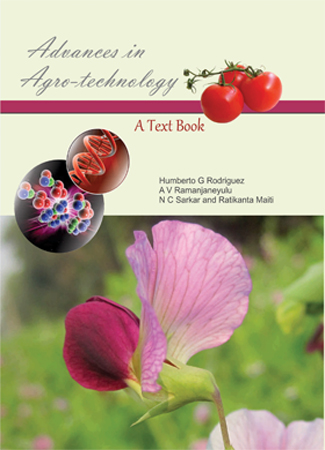
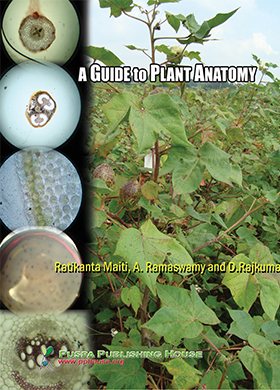

.jpg)
.jpg)


